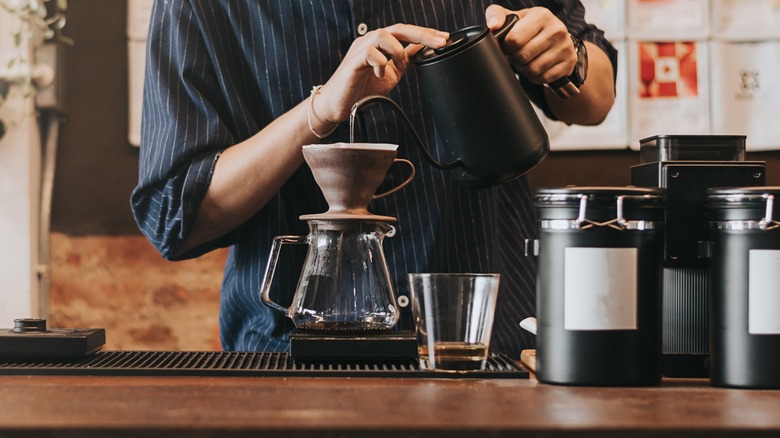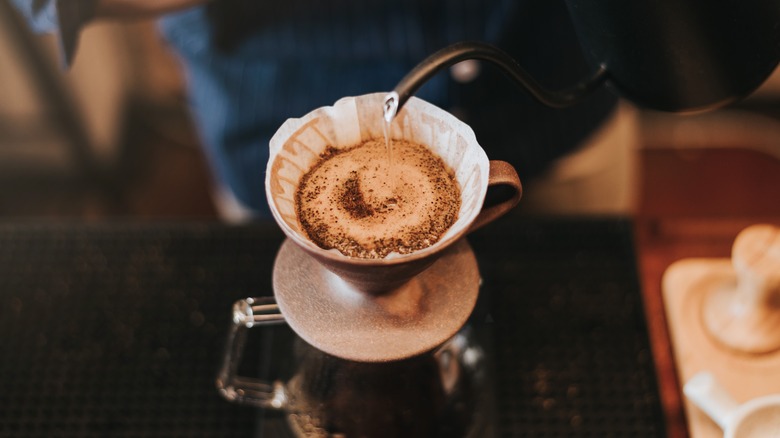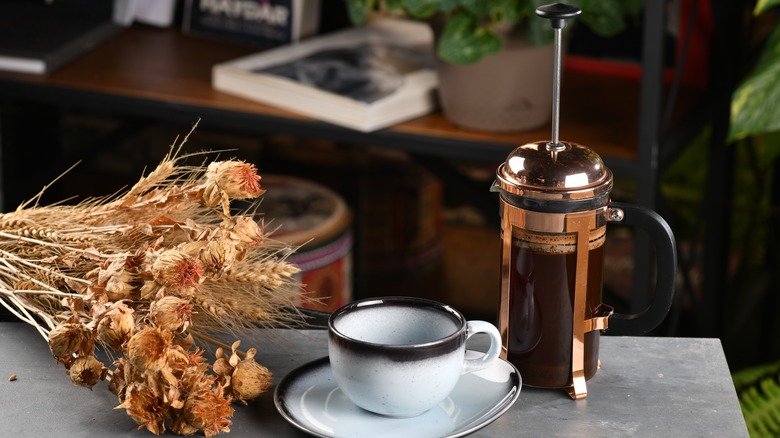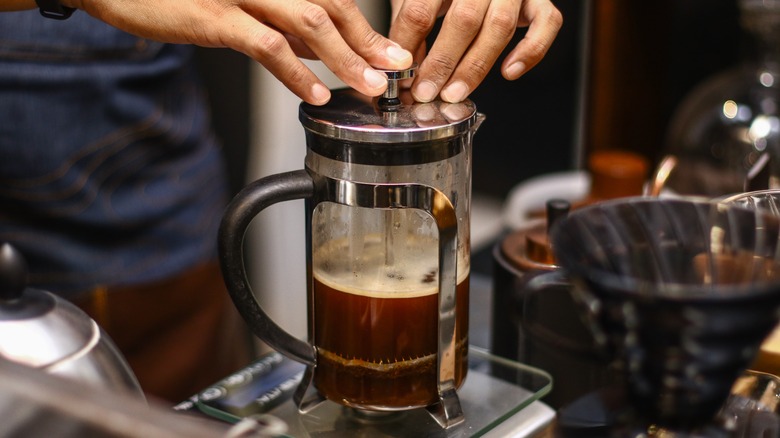The 3 Phases Of Coffee Brewing You Should Know For The Perfect Cup
You've spent time picking out your favorite coffee beans and ground them to the perfect texture. You've even picked out your favorite mug. You've got everything ready to enjoy your favorite brew. So how do you make sure that the perfect cup of coffee you're dreaming of is what actually makes it into your cup? The key is to make sure you're properly following through on the three phases of coffee brewing.
While phases of brewing occur automatically with electronic coffee machines, if you're doing a manual method like a pour-over or a French press, you need to be especially careful about the timing of your steps. Brewing your coffee with the correct timing increments following the three-step coffee brewing method will ensure a smooth, balanced brew that will upgrade your morning coffee experience! And don't worry if you end up with a sub-par brew, because whatever elements seem off about your coffee serve as great indicators of which step or steps to tweak next time.
Bloom
Before you can officially start brewing, you first want to get blooming. This can also be referred to as "wetting" the grounds or "pre-brewing." While you're pouring hot water into your coffee grounds in this step, this is just preparation for the main brew.
When conducting a bloom with your pour-over device, pour a small amount of your hot water onto your coffee grounds and wait about 45 seconds before moving onto the main brew and pouring in the rest of the hot water. "You should see large bubbles coming up from your coffee," Colby Cox, a roaster at Atlas Coffee Club, shared with CNN. "This is natural trapped gasses from the fresh coffee escaping. If you don't give it time between pours, this gas gets trapped in your final brew and can make it taste overly acidic."
A similar method can also be applied to brewing French press coffee. While you might be tempted to go right into the main brew with the French press, giving it a chance to bloom results in a much better brew. To differentiate between the "bloom" and the "main brew" with your French press, pour some or all of your water into your French press, wait 30 to 45 seconds, stir the mixture, and let the coffee settle again. Then you can move on to setting the timer for your main brew.
Main brew
After you've finished your bloom, it's time to move on to the central part of the process, the main brew. Depending on whether you're making pour-over coffee or using a French press, these processes can look a little different. During the pour-over process, water is essentially constantly being filtered through the coffee grounds in the apparatus. In contrast, when using a French press, you have to let the coffee grounds sit in the water untouched for a few minutes before plunging.
The pour-over method is best done with a great deal of precision. You have to keep actively pouring your hot water in, but not too quickly or too slowly, or else it will negatively impact the coffee's flavor. A gooseneck kettle gives you the best control when pouring on hot water for the pour-over method. When using a French press, most coffee connoisseurs recommend a brew time of three to four minutes, but a longer brew time of six to eight minutes can be beneficial if you have a coarse enough grind.
Closing
After you've completed the main brew it's time to wrap up or "close" your brew. Again, this looks different depending on the brew type. For the pour-over method, your coffee should stop dripping through around a minute to a minute and a half after you finish pouring all of the water. This is how you'll know the process is finished and you can remove the pour-over apparatus from the container below it that has collected the coffee. For the French press, this is where you get to do the actual pressing. You want to press the plunger down gently, without too much force: Going too quickly can lead to bitterness.
After your brewing process is "closed" and your coffee is in your mug, give it a sip and evaluate the taste to identify which parts of the process were successful or unsuccessful. Depending on how smooth or bitter your coffee turns out, you may want to adjust the grind size, the bloom or brew time, or some other aspect of the process for the best at-home brew. Make note of anything you want to keep or change for next time and then simply enjoy the rest of your cup of joe.



